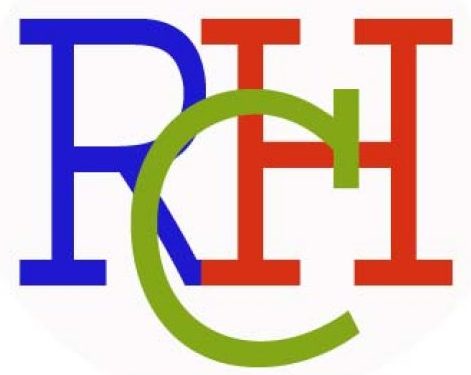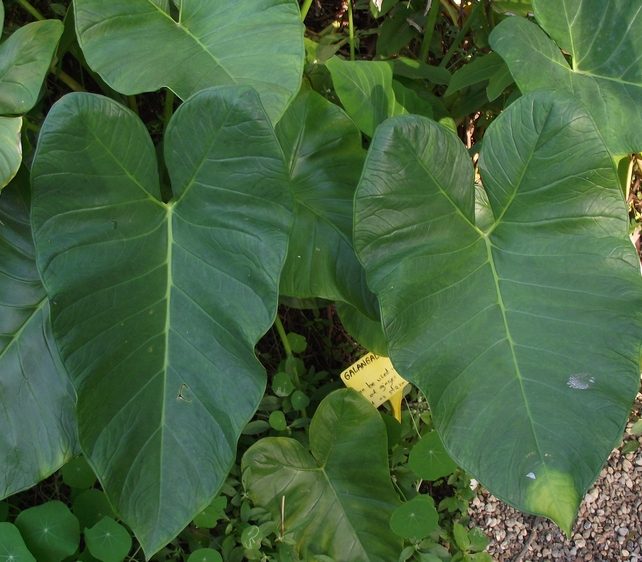Treat External Pile (Rectum Prolaspsed) With Cocoyam Leaves (Xanthosoma sp)

Common name: Cocoyam
Botanical name: Xanthosoma sp
Xanthosoma is a genus of flowering plants in the arum family, Araceae. These lush plants are frequently referred to as “elephant ears” due to their large, elephant-ear-like leaves. Let’s explore more about Xanthosoma:
Several species within this genus are grown for their starchy corms, which serve as an important food staple in tropical areas. These corms go by various names, including malanga, otoy, otoe, cocoyam, tannia, tannier, yautía, macabo, ocumo, macal, taioba, dasheen, quequisque, and ʻape (in Papua New Guinea, it’s known as Singapore taro)
Potential Health Benefits of Cocoyam Leaves
Based on studies and research, here are some likely health benefits associated with cocoyam leaves:
- Rich in Potassium:
- Cocoyam leaves are rich in potassium, with 100 grams containing approximately 94 mg of this essential mineral.
- Adequate potassium intake is beneficial for nerve function and overall health, especially for the elderly.
- Energy Source:
- Cocoyam leaves are an excellent source of carbohydrates, providing approximately 380 kcal of metabolizable energy per 100 grams.
- Carbohydrates are essential for maintaining good health and providing energy to the brain and muscles1.
- Digestive Health:
- The high dietary fibre content in cocoyam leaves supports digestion.
- Including cocoyam leaves in the diet may help improve digestion by promoting beneficial gut bacteria and aiding waste elimination.
- Immune System Boost:
- Cocoyam leaves have anti-inflammatory properties, which can contribute to a stronger immune system.
- The presence of vitamin C and other bioactive compounds further supports immune health.
- Promotes Healthy Eyes:
- Cocoyam leaves contain β-carotene, which is essential for eye health and vision.
- Good Source of Calcium:
- The high ash content suggests that cocoyam leaves could be a good source of calcium, important for bone health.
- Antioxidant Activity:
- Cocoyam leaves may exhibit antioxidant activity, protecting cells from oxidative damage.
- Anti-Inflammatory Properties:
- The anti-inflammatory compounds in cocoyam leaves contribute to overall health and well-being.
Remember that while cocoyam leaves offer these benefits, it’s essential to consume them properly and consult with a knowledgeable herbalist or healthcare provider. Enjoy the goodness of cocoyam leaves in your meals
- Aids in weight loss.
- Control blood pressure.
- Aid development of the fetal brain and nervous system.
- Prevent anaemia.
- Helps reduce wrinkly skin.
- Helps Increase sperm production.
Chemical Composition of Xanthosoma Cocoyam Leaves
- Proximate Composition:
- The leaves are known for their high moisture content, which can vary depending on the specific variety and growing conditions.
- They contain crude protein, fibre, and a small amount of fat.
- Ash content is indicative of the mineral content in the leaves.
- Mineral Content:
- Xanthosoma leaves are a source of essential minerals such as iron (Fe), zinc (Zn), copper (Cu), magnesium (Mg), manganese (Mn), phosphorus (P), sodium (Na), potassium (K), and calcium (Ca).
- The potassium content is particularly high, which is beneficial for maintaining electrolyte balance and nerve function.
- Antinutrient Factors:
- While cocoyam leaves are nutritious, they also contain antinutrients like phytate and tannin.
- These compounds can interfere with the absorption of minerals and digestion of proteins but can be reduced through proper cooking methods1.
- Carbohydrate Content:
- The leaves have a significant amount of carbohydrates, providing a good source of energy.
- They also contain starch, which is a staple in many diets where Xanthosoma is cultivated.
- Protein Content:
- Cocoyam leaves are a good source of plant-based protein, which is essential for building and repairing tissues.
- Fiber:
- The dietary fiber in cocoyam leaves aids in digestion and helps maintain a healthy gut.
- Oxalate Content:
- Cocoyam leaves contain oxalates, which can form crystals and cause health issues if consumed in large quantities.
- It’s important to cook the leaves properly to reduce the oxalate content and prevent potential health risks.
Health Benefits Based on Chemical Properties
- The minerals in cocoyam leaves contribute to bone health, nerve function, and overall metabolic processes.
- Antioxidants present in the leaves help combat oxidative stress and may reduce the risk of chronic diseases.
- The fiber content promotes digestive health and may aid in weight management.
- Proteins and carbohydrates provide essential nutrients for energy and body maintenance.
It’s important to note that while cocoyam leaves are nutritious, they should be prepared correctly to minimize the presence of antinutrients and oxalates. Always consult with a healthcare provider or a knowledgeable herbalist before using cocoyam leaves for medicinal purposes. Enjoy the benefits of these nutritious leaves in a balanced diet!
How to Treat External Pile using Cocoyam Leaves (Xanthosoma sp)
Instructions
Peel the stem of the Cocoyam and cut it into pieces to get a
handle on it. add a hand full of scent leaf (Occimun basilicum)
to and put in fresh plantain leaf, wrap and tie with plantain rope.
Bury in hot wood ashes and allow to steep for 10 – 15 minutes.
Remove from the plantain leaves and grind into a paste.
add 10 tablespoons of kernel oil and preserve it in a small container.
whenever the rectum (anus) comes out, apply the mixture on toilet paper and use it to push the rectum
inside before cleaning it with the same tissue. Apply this for 7 days before embarking on treatment of the pile internally (using Repamp Herbal Tea).
How to treat internal pile using Repamp herbal tea
Pour a sachet of ginseng tea into a container that you can cover the lid. Get palm kernel oil in one liquid milk tin (quantity) mix with the powder and allow to sleep till the next day. take a teaspoon full first thing in the morning before breakfast and last thing in the night before going to bed two hours after dinner.
To get repamp herbal tea please whats app or call this number +233548383154

